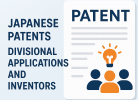Saitama Prefecture is humanly and materially blessed. Just north of Tokyo Prefecture, it is home to over 7 million and close to 2,000 people per square kilometer (5,000/sq. mile), and many businesses. [3] Yet its smaller companies, like those in many places, often struggle to survive and can find it difficult to make a breakthrough product. The “Saitama Model” has come to be associated with the prefecture’s approach to support their use of pre-researched innovation–patents released by various institutions and corporations. The Saitama Model tries to give the innovative-mental as well as financial support that the smaller companies need to grow and be more independent of low-profit work orders from outside.
The Saitama Model interestingly harnesses the creativity of students to make suggestions of patent utilization to the interested smaller companies in Saitama. Students are invited to enter innovation competitions where they take released patents and propose practical ways that smaller companies could develop unique products from them [1].
Yasuyuki Suzuki, who has been heading the Saishin Collabo SGK [industry-academica-government collaboration] foundation (set to end its initial three-year period in March 2019), explains that the Saitama Model works not only to help small and medium-sized companies find and acquire licenses for released patents, but to run alongside of them, backing them up with ideas and even financial support until they can turn a profit independently on their new-found products [1]. He wants Saitama’s programs to influence smaller companies that do benefit from the model to become more independent of subletting companies, able to make unique products that stand from among the global glut of standard products [2].
Business paper Sankei Shimbun editor Takeo Matsuoka agrees with Suzuki that the smaller companies often give up business, seeing no way out between the crush of dropping income from larger companies for making their standard products and the risk of losing such work altogether. Matsuoka thinks that developing unique products and branding them–that is, using intellectual property aggressively is a major key to solving this dilemma for the smaller companies that willing to take the risks. At the same time, it is groups like Saishin Collabo SGK that give those companies the ideas and backup needed to succeed [1].
Matsuoka reports that in the three years of the existence of Saishin Collabo SGK, companies developed eleven new products using released patents (beyond their modest goal of ten new products). While the giant corporations of Japan may more grandly live out Japanese government’s dream of making Japan an IP powerhouse, some of the myriad smaller companies are just now coming to see new horizons with various collaborative programs that are appearing–the Saitama Model, as well as Kawasaki City’s IP matching program, aggressive corporate publication of released patents (like Kyocera’s), and various other tech transfer measures.
* For questions or consultation, please contact us for more information.
** The information provided on this website is for informational purposes only and is not intended as legal advice.
Taro Yaguchi
Sources
[1] Matsuoka, Takeo, “【視点】中小企業に開放特許 脱下請け・ブランド創出で生き残り [Perspectives: Released patents for smaller companies; surviving by escaping subcontracting and making brandnames],” parts 1 and 2, January 22, 2019.
[2] Collabosgk-saitama, “埼玉派遣 事業プロデューサーのご紹介 [Introduction of business producer sent from Saitama],” accessed February 26, 2019.
[3] Wikipedia, “Saitama Prefecture,” accessed February 26, 2019.
Image by ColiN00B on Pixabay.






